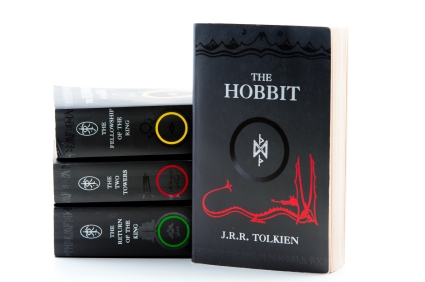What: Even if you’ve never read them, odds are that you know fantasy works like J.K. Rowling’s Harry Potter series and George R.R. Martin’s A Game of Thrones. These and many other fantasy-genre books have transcended print to become household names and are credited with helping to renew a flagging book and film industry. Given its immense popularity now, it can be hard to imagine that the foundations of modern fantasy were laid over seven decades ago in author J.R.R. Tolkien’s works, The Hobbit and The Lord of the Rings. Celebrate Tolkien’s blend of mythology and heroism during Tolkien Week, Sept. 18 to 24.
Background: Established in 1978 by the American Tolkien Society, Tolkien Week celebrates the writings and lasting influence of Tolkien. Tolkien is held by many to be the father of modern fantasy, inventing staple fantasy characters like hobbits and orcs, while introducing magical wizards, dragons and elves to the popular lexicon. The week includes Hobbit Day on Sept. 22, which is intended to coincide with the joint birthday of Tolkien characters Bilbo and Frodo, both small, mythological hobbits.
Story Pitch: Tolkien’s work in the fantasy genre has branched out well beyond books and influences creative works to this day. Martin’s latest book release caused a noticeable uptick in sagging bookstore sales, so publishers would do well to focus in on the ways in which their own books not only follow in Tolkien’s tradition but also blaze a new path of their own. They should also use the week to promote authors who are experimenting with the genre. Creators, publishers and distributors of fantasy-themed tabletop and video games can also use this opportunity to recognize Tolkien’s unmistakable influence on their work. They can also focus on how fantasy literature fans get drawn into the medium, such as how these games allow players to interact with the fantasy setting, use their imagination, and tell their own stories. Tolkien’s works, and the other fantasy literature that has followed, continue to draw people into reading, something that bookstores and libraries should certainly take note of. Seminars, collection displays, readings and even movie screenings can draw new readers in with the allure of action, drama and detailed worlds.
Story Hook: Even 33 years after his death, Tolkien’s posthumously published book The Children of Húrin debuted as a New York Times number one best seller. What continues to drive interest in Tolkien’s works, as well as the huge success of others in the genre? Consider the following when making your pitch:
- How have fans of fantasy, and other genres, responded to digital books and e-readers?
- What branding and promotion challenges appear during the adaptation of a book to film or any other medium?
- Do children and adults who enter fiction reading through fantasy works limit their reading to only fantasy, or are they big readers in general? Do they read more than the average reader?
- Does the fantasy genre have strong prospects for continued mainstream success, or is the genre in a bubble?
Tips: Provide contact information for the owner of a local book or a game store who can comment on trends in the fantasy genre and how it has influenced their business. A professor or expert on mythology can also provide interesting insight into fantasy works.
Resources:
American Booksellers Association
(800) 637-0037
info(at)bookweb.org
www.bookweb.org
American Tolkien Society
www.americantolkiensociety.org
Science Fiction and Fantasy Writers of America
www.sfwa.org
Tolkien Library
contact(at)tolkienlibrary.com
www.tolkienlibrary.com
–Researched, compiled & written by Nicholas Testa
Event Dates & History Today from CHASE’S Calendar of Events![]()


